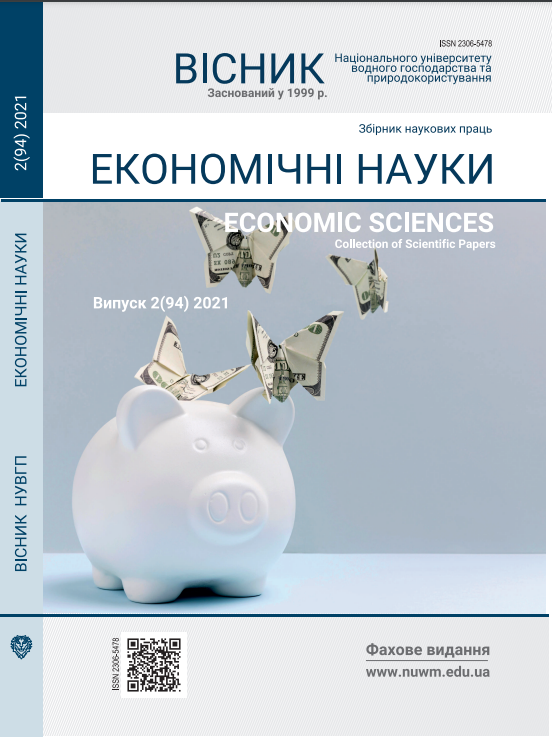SOCIAL EXPENDITURE IN UKRAINE: STRUCTURAL-DYNAMIC FEATURES OF FINANCING AND IMPACT ON SOCIAL SECURITY
DOI:
https://doi.org/10.31713/ve22021231Keywords:
social expenditures, social security, social sphere, poverty, standard of living.Abstract
The purpose of this article is to study the structural and dynamic features of public funding of social expenditures in Ukraine in the context of their impact on social security. During 2014–2020, the amount of budget funding for the social sphere in all its components (education, health care, spiritual and physical development, social protection and security) has been constantly growing. Despite the steady growth of budget funding for social expenditures, their rates did not correspond to inflation, which indicates a decrease in funding for the social sphere in real terms. Local budgets in Ukraine are most important for financing education, as well as spiritual and physical development, the state budget is for financing social protection and security programs, while almost the same importance of different levels of the budget system in Ukraine is for financing health care. Taking into account expenditures from social insurance funds somewhat changes the structural features of financing social expenditures in Ukraine: the largest share in total expenditures falls on local budgets (about 40% in 2019), while the state budget and social insurance funds in 2019, accounted for 32% and 28% of total expenditures, respectively. That is, almost a third of all social expenditures in Ukraine are financed by insurance funds. Based on a comparison of the total amount of public funding for social expenditures in Ukraine and the EU in relation to GDP, it can be stated that the EU publicpolicy has a higher level of social orientation. The level of social security in Ukraine, according to the Ministry of Economic Development, Trade and Agriculture, is quite low (during 2010–2019 it varied from 56 to 64%). At the same time, there is a direct link between the amount of funding for the social sphere and the integrated index of social security. That is, the financing of social expenditures is a factor in the growth of social security. It is noteworthy that with the vast majority of indicators that are components of indicators of social security in accordance with national methods, the amount of funding for social expenditures does not show the connection or it contradicts the logic. This indicates that the financing of the social sphere has a complex impact on all components of social security, which issometimes manifested through a certain time lag.References
Бюджетна політика: дані та аналітика / Міністерство фінансів України. URL: https://www.mof.gov.ua/uk/budget-policy (дата звернення: 10.04.2021).
Демографічна та соціальна статистика: статистичні дані / Державна служба статистики України. URL: http://ukrstat.gov.ua (дата звернення: 21.04.2021).
Державні видатки за функціями. Еuropean statistics / Eurostat. URL: https://cutt.ly/OnEnbLJ (дата звернення: 21.04.2021).
Звіти щодо виконання державного бюджету України: попередні бюджети / Фіністерство фінансів України. URL: https://www.mof.gov.ua/uk/previous-years-budgets (дата звернення: 20.04.2021).
Операції Пенсійного фонду України та фондів соціального страхування (без коштів з державного бюджету та взаємних розрахунків фондів) / Державна служба статистики України. URL:
http://ukrstat.gov.ua/imf/arhiv/opf/opf_u_.htm (дата звернення: 21.04.2021).
Соціальний захист населення України у 2019 році : статистичний збірник / Державна служба статистики України. URL: http://www.ukrstat.gov.ua/druk/publicat/kat_u/2020/zb/07/zb_szn_2019.pdf (дата звернення: 28.04.2021).

